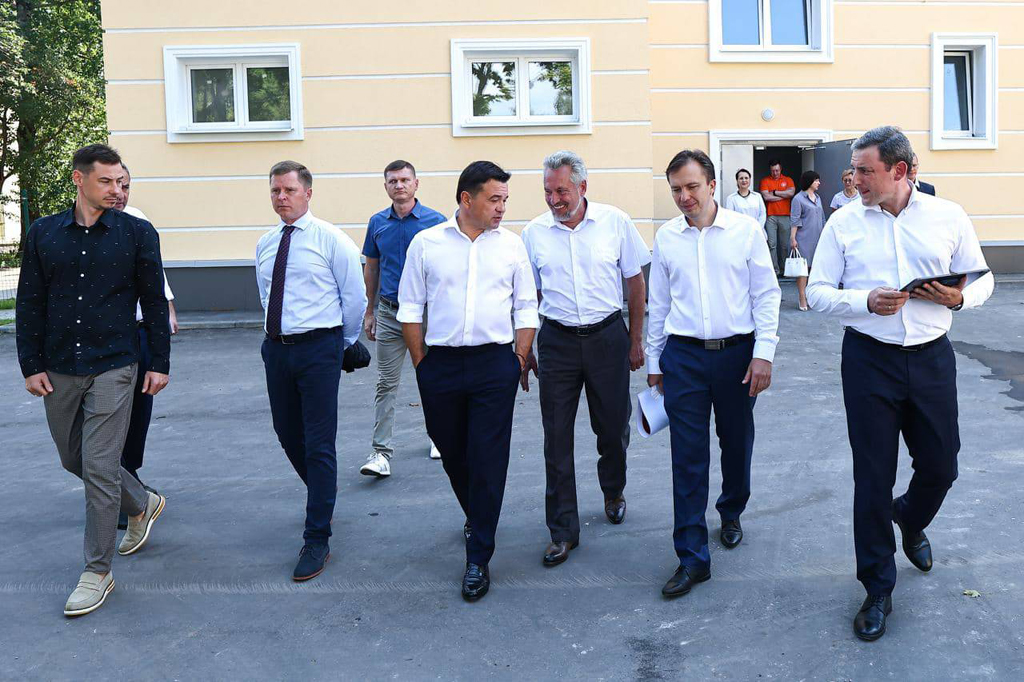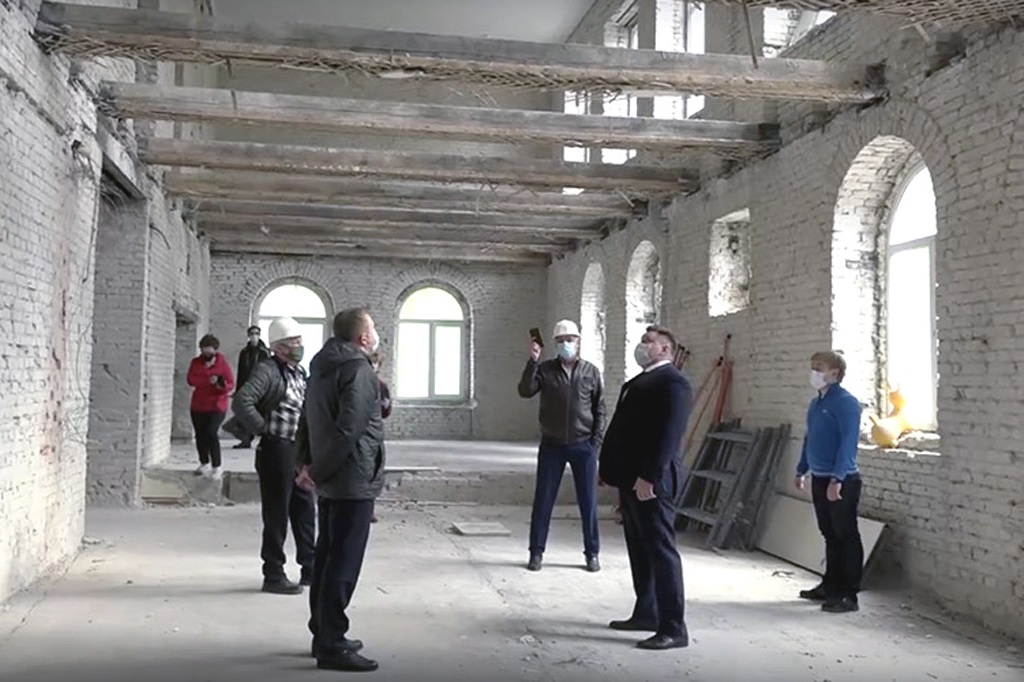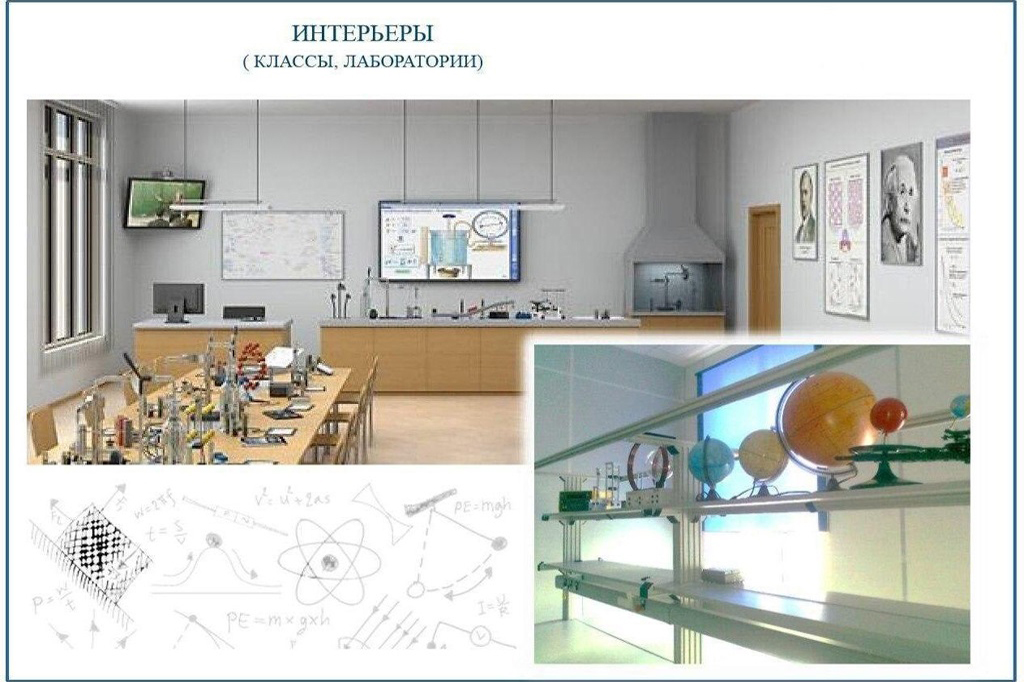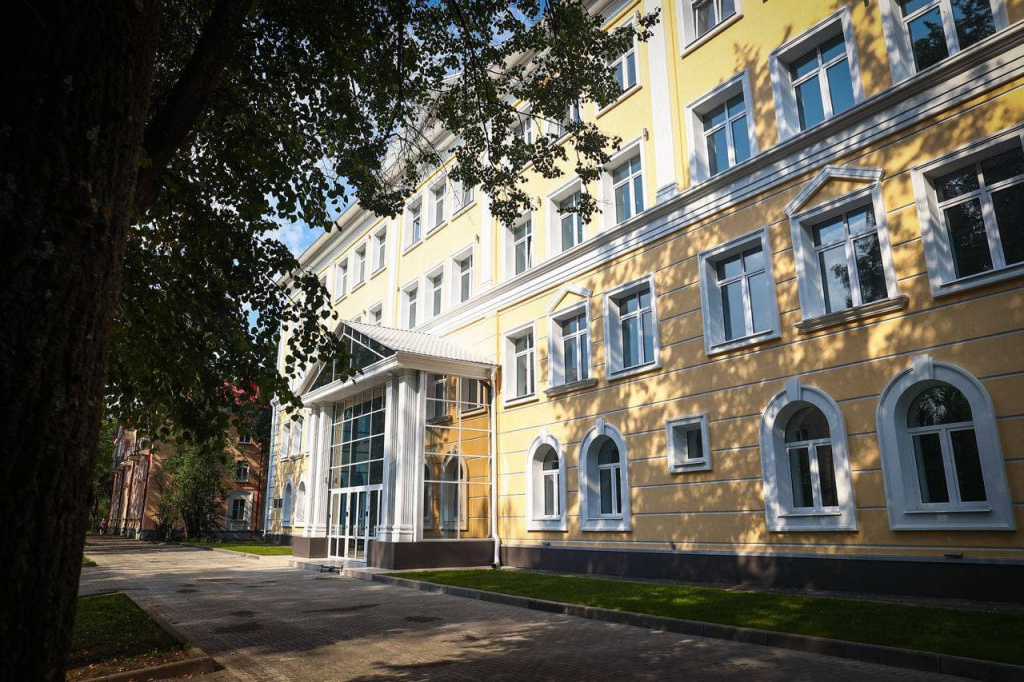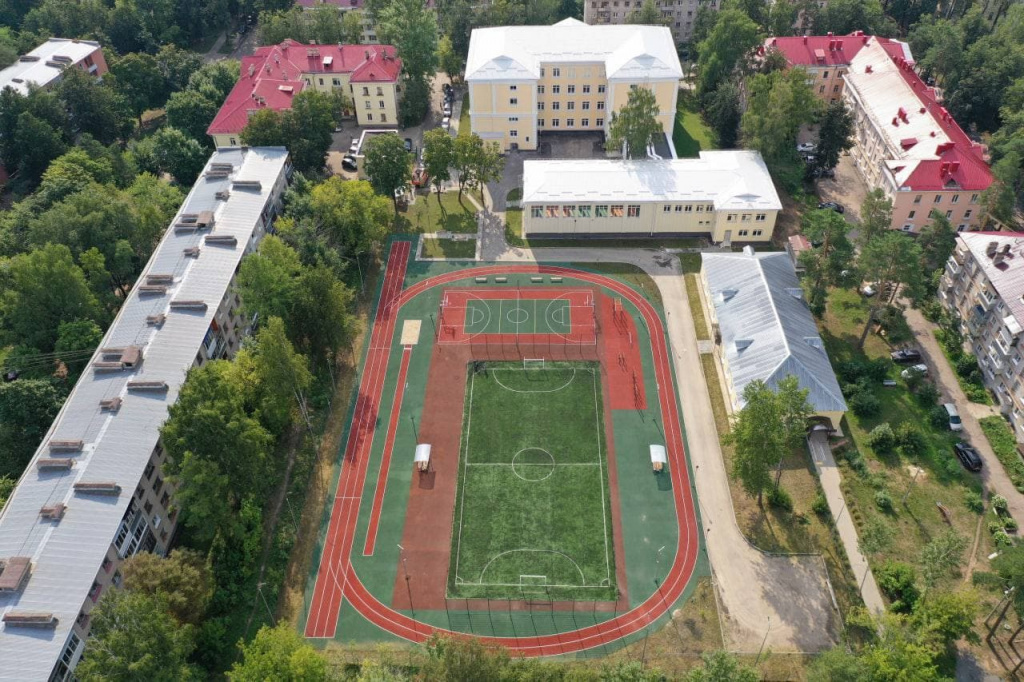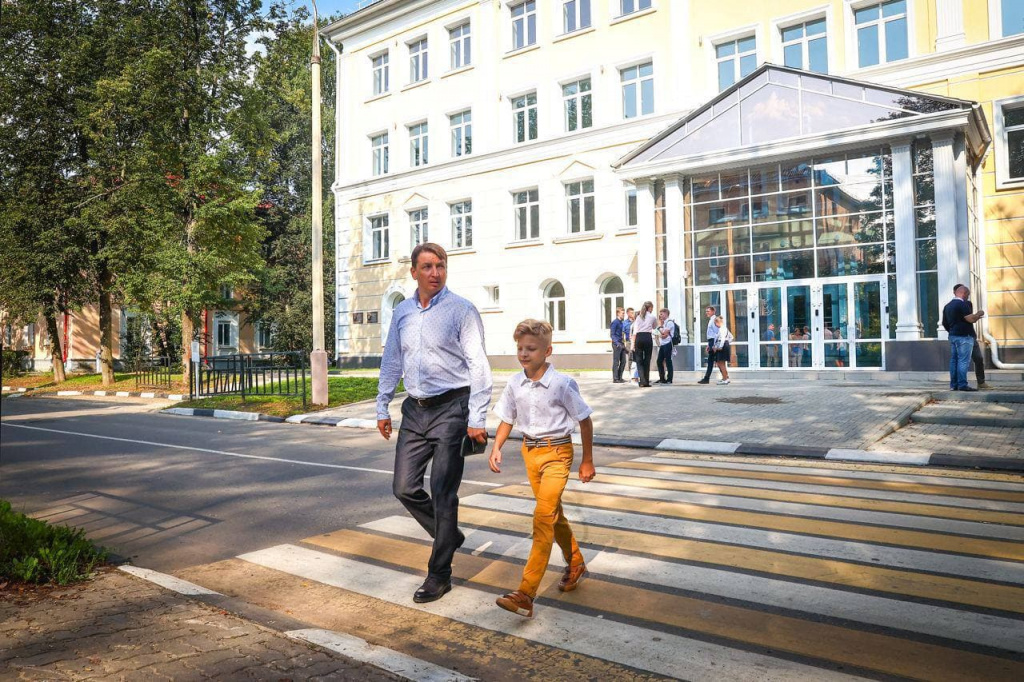Lyceum named after Academician V. G. Kadyshevsky. Ready for actions
Education, 27 August 2021
On 1 September, a new educational institution will open in Dubna created with the support of the Joint Institute. Its official name is the autonomous non-profit educational organization “Moscow Regional Physics and Mathematics Lyceum named after Academician V. G. Kadyshevsky”. It is located in the building of the former School No.4, and now, after the repairs, it is being equipped with furniture, textbooks, and manuals. The teaching staff has been formed, first lyceum students have been selected. A new history of a new community of teachers, parents, and school students will start just in a few days. The history that will be a part of the life of each of them: friendship, help, reaching educational achievements, overcoming challenges. On the eve of the opening, Director of the Lyceum Yuri Petrovich Kurlapov spoke about the plans, structure, and mission of the Lyceum.
— Our goal is to create a comfortable polycultural educational environment for the harmonious development of students in the fields of natural sciences, information technologies, and mathematics to discover their talents. We want the Lyceum to be a “Life-long learning” space for students, parents, and teachers. First of all, we will make efforts to ensure a respectful attitude to human dignity, rights of all the participants of the educational process so that everyone to be heard and not afraid to express their opinion.
During the visit to Dubna and the tour around the Lyceum, Governor of the Moscow region Andrey Vorobyev highlighted that such schools are necessary and important for the region. They become flagships in their towns.
— Tell us please about lyceum students and their supervisors. Who are they, how many are there of them, where are they from?
— It is planned that there will be 350 school students of 5-11 grades. The Lyceum will gradually grow, and this year we enrol about 210 people. There is only one 9th grade and two groups for each other grades. Each group consists of 20 people. There are 10 people from other cities. They are from the nearest cities, and parents are still solving transport issues by themselves. We hope that one day we will have a dormitory.
The selection of teachers for such a lyceum is a complicated task. I was given conditions: we should not “rob” schools, we should find new teachers, attract them from other cities. As you know, JINR holds schools for teachers of physics, mathematics, and IT not only in Dubna but also in CERN. We have received a list of 126 emails of teachers who have had links to these events. So, the first newsletter we made was for them. Many of them answered, we held online and then in-person interviews. After that, an authoritative commission with the participation of representatives of the City Administration, the Council of Deputies, and the Joint Institute for Nuclear Research made recommendations on who should be invited.
Then, negotiations began mainly about allocating housing for teachers. Seven specialists will come here from other cities: from physics and mathematics lyceums of Khanty-Mansiysk, Barnaul, as well as from the Tver region and the Dmitrov district. JINR and the City Administration have allocated apartments for them.
— Will be there only physics and mathematics specialities?
— Not only. There will be three specialities: physics and mathematics, IT and technology, biology and chemistry. Regardless of the speciality, all of them will be taught English deeply. More than it is planned according to the curriculum of a secondary school: 5-8th grades will have five hours of English per week. Everyone will also have a deeper course in mathematics, more serious than in the school curriculum. Specialised training will begin from the 9th grade.
The experience of the Lyceum “Dubna” has shown that it is possible to train school students for admission to the necessary universities in two years. I mean MSU, MEPhI, and MIPT. It is possible in two years, but it is extremely difficult. And three years is enough not to turn children into “dried-up nerds”. They should develop comprehensively.
— The question that concerns all the parents is whether it is possible to do without tutors if a child studies at your Lyceum?
— Both in the Lyceum “Dubna” and Kadyshevsky Lyceum, I will be against situations when children are taught by tutors. Our curriculum allows everyone to be properly trained. There are two necessary conditions: bright mind and the desire to study. We will do everything else for children. We do not have just 6 lessons after which students go home. There will be a full working day, until 4:20 PM. It means there will be 9 lessons, one of which will be devoted to self-training. Children will prepare homework by themselves but this will be the time when they will be able to seek advice from teachers in those subjects they have problems with.
It is planned that the Lyceum will have a six-day working week, but there will be only five school days. Because on the 6th day, on Saturdays, children will have excursions, trips, meetings with interesting people, work on research projects, as well as all possible sports and cultural events.
— How does this relate to the state training programme?
— Students will master the entire content of the Federal State Educational Standard. I think that this will not cause any big problems because there are fewer children in each grade. And judging by the way we selected students, they will be motivated and well-trained. It should be borne in mind that we add three lessons daily to an ordinary curriculum: two hours for specialised courses and additional subjects and one hour of self-education.
— It is not the first successful case in your biography. We know and love the Lyceum “Dubna” and the School “Dialogue”. What is the fundamental difference of the new Lyceum?
— The time has changed. School No. 8 has become a gymnasium in 1991. At that time, there were other social and economical conditions, the state’s attitude to education. The Lyceum “Dubna” was created in 1994, in a time of economic catastrophe, empty walls, and etc. But parents understood that it was necessary to provide children with a reliable staff, i.e. good education. And then it was not clear what was in store for students. But now everything is by and large clear. There are conditions, resources, the scope for the realisation of talents. The state supports young people in all areas: be it art, sports, not to mention science and technology. Parents wish their children to be successful, get a good education, move forward and up.
— The creation of the Lyceum is held in the frames of the National Project “Education” and the regional project “Modern School”. What other educational projects are you going to participate in?
— We will take part in all the programmes. I have already asked my deputy to submit for the programme “Pushkin map” although it covers only high school students. It will be easier to visit museums and theatres with such a map. We will use money paid by parents to organize monthly bus excursions, and we have already compiled a programme for each grade. We will start with Dubna museums, then we’ll continue the programme in Dmitrov, the nearest cities, interesting places in terms of science and technology, and, of course, Moscow. These excursions will have a cultural, aesthetic, patriotic, and historical orientation. As for academic issues, we will cooperate with the educational centre “Vzlet” functioning as a part of the structure of Primakov Regional Gymnasium and Kapitsa Phystech-Lyceum. These are our closest colleagues, and we will compete with them in terms of the education quality so that gifted children do not leave Dubna but study here. Of course, we will implement educational programmes jointly with JINR, the JINR University Centre, the Physics and Mathematics Open Classroom, the School of Young Researchers “Dialogue”, and the International Computer School..
— The city media, the Dubna City Administration were monitoring the repairs of the Lyceum. Governor of the Moscow region A. Vorobyev also came. Do you think this building corresponds to the planned layout?
— Now I can say that it does correspond! The reconstruction was difficult, it was hard to believe that it would work out. Builders had problems knocking out of the schedule every now and then.
— What do you think is the most important and useful for children in the new Lyceum?
— The most useful things are the stadium and a good gym. And most importantly, we are in for creating an atmosphere of learning and passion!
— Finally, I cannot but ask one more question: what are the plans for teaching children of foreign JINR employees?
— Dubna has accumulated a rich experience in training children of foreign specialists. Several dozens of children from the countries of the socialist commonwealth have studied at Schools No. 8 and No. 9. And now we are ready to accept children, help them master the Russian language up to the level necessary for secondary education. Foreign children, representatives of other cultures in various grades, in its turn, will provide Dubna school children with new communication experience. Several students have been already accepted to our Lyceum in different grades.
Facts and figures
- On 12 March 2019, a governmental decree was issued on the creation of the Moscow Regional Physics and Mathematics Lyceum.
- In May 2020, Yu. P. Kurlapov was appointed Director.
- In June 2020, the contractor OOO “Arsenal-Stroy” started the reconstruction of the building, the cost of the state contract is 185.3 million rubles.
- In December 2020, 50 % of all construction works were completed.
- In February 2021, the selection of teachers started.
- In August 2021, the building acceptance certificate was signed.
- From April to August 2021, students have been selected.
Galina Myalkovskaya, JINR Weekly Newspaper
Photos by Governor’s press-office and Government of the Moscow region
